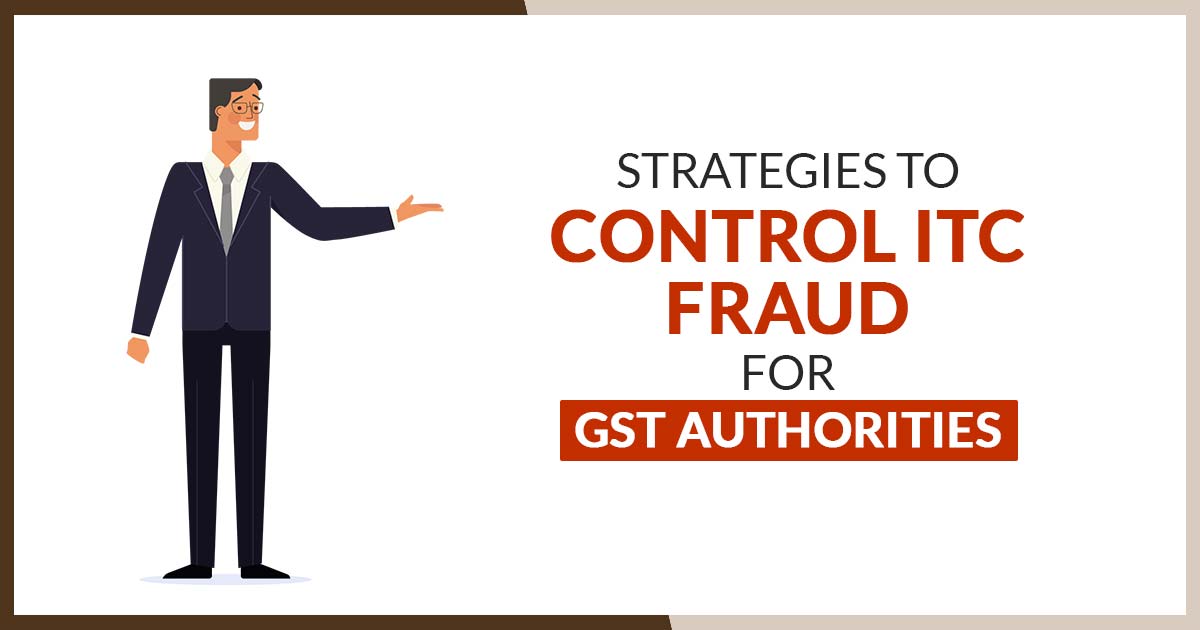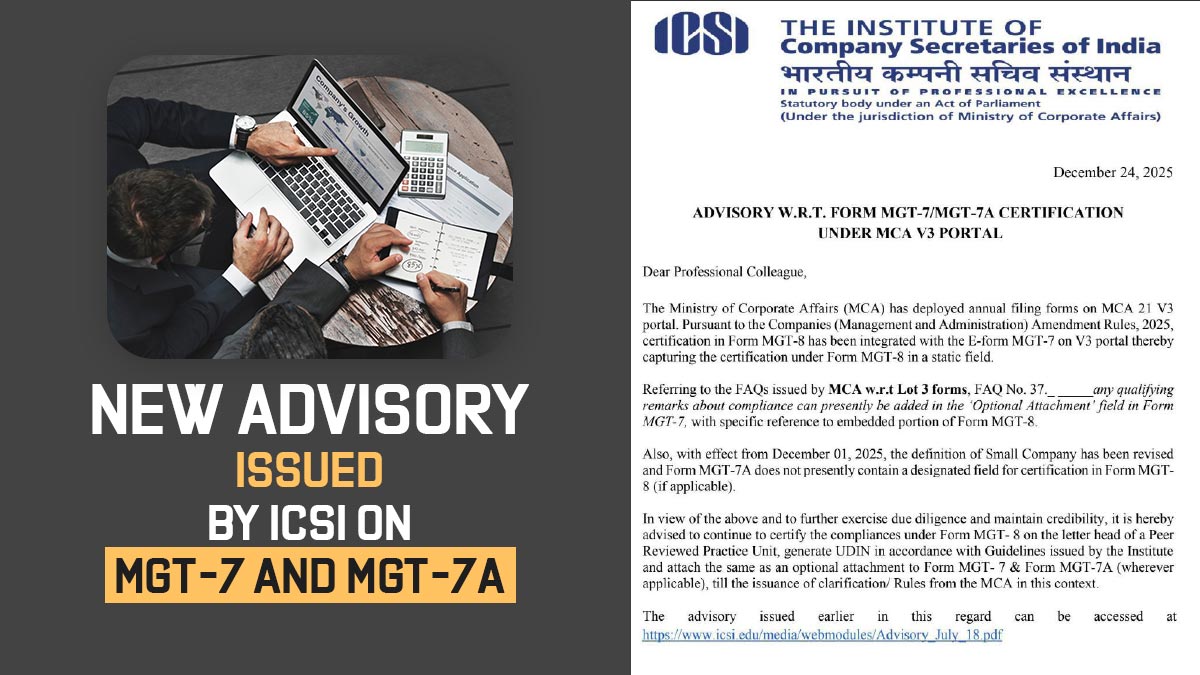
This post discusses some of the basic effective strategies which are helpful for GST officials. They can be used to prevent input tax credit fraud. This technique provides a complete process for handling and determining possible fraudulent actions related to claiming ITC, which can assure tax compliance and save the integrity of the GST system.
The Ministry of Finance recently issued a Press Release on October 18, 2023, titled- DGGI Detects Over 6,000 Fake ITC Cases Involving INR 57,000 Crore GST Evasion and Arrests 500 Individuals Between April 2020 and September 2023. Additionally, in the fiscal year 2023-24, the Directorate General of GST Intelligence (DGGI) detected an overall GST evasion of INR 1.36 lakh crore, with voluntary payment of INR 14,108 crore.
This announcement sheds light on the challenges related to GST Input Tax Credit (ITC) fraud and the subsequent difficulties in recovering the evaded amounts. Despite various measures implemented by the Central Board of Indirect Taxes and Customs (CBIC), such as e-invoicing, special drives to detect fake firms, geotagging, biometric authentication, GSTR-2B implementation, and restrictions on GST return filing if one month’s return is not filed, there has been a significant amount of GST evasion amounting to INR 1.36 lakh crore in the fiscal year 2023-24 alone.
Out of this, only INR 14,108 crore has been recovered through voluntary payment. This raises the question of how to address the issue of GST ITC fraud in a constantly evolving environment, especially considering the availability of abundant data and the measures already taken by CBIC.
What Actions Should be Taken By the Government to Control GST ITC Fraud?
Implement a stringent process for new GST registrations. One of the major issues is the unauthorized use of PAN or Aadhaar documents by third parties. To prevent this, additional measures can be introduced, such as tracking IP addresses during registration and flagging deviations in registered addresses for further verification. Here are some additional steps that must be taken to improve security:
Registration via Biometric Process: Adding biometrics as an additional process for authentication has already been used. However, some more efforts are still required in this direction. Further measures may help prevent the illegal use of PAN & Aadhaar by another person by deceiving the PAN holder. In other words, we can say that tracking the IP address through which the registration process has been carried out. Moreover, deviation in registered address in KYC can be shown as a red flag for further document verification process.
PAN and Aadhaar Verification: Incorporate real-time verification of PAN and Aadhaar details during the registration process to immediately identify any discrepancies. This could involve a process similar to video verification used for issuing digital signatures.
Reporting Tool: Create a transparent procedure for individuals to report any suspected instances of fraudulent registrations, facilitating swift response and thorough examination.
General Understanding: Raise awareness among individuals and businesses regarding the potential dangers and repercussions associated with unlawfully registering for GST using someone else’s identity.
Verify DSC: In order to verify the authenticity of registration applications, promoting the use of digital signatures is an additional layer of security.
Review Systematic: Perform regular assessments and examinations of registered organizations to prevent any discrepancies or illegal practices.
Blockchain System for GST: Implement a blockchain-based system for GST registration to create a solid and unshakable ledger of all registrations, making it extremely difficult to manipulate or misuse records.
Identity Proof of AI-based System: Utilize artificial intelligence (AI) for in-depth identity verification by analyzing facial recognition, voice recognition, and behavioural patterns to ensure that the person registering is the legitimate owner of the PAN and Aadhaar.
Submit Real-time Selfies: In order to prevent the use of static images, it is best to mandate applicants to submit real-time selfies during the registration process to confirm their identity.
Integrate with Mobile Applications: Develop a mobile application that incorporates biometric authentication and secure document upload features, enabling individuals to complete the registration process with utmost safety.
Utilize Intelligent Contracts: Apply this way as an additional layer of security on a blockchain network to automate the verification and approval process, minimizing the potential for manual intervention and ensuring streamlined operations.
Third-Party Authentication Process: Integrate specialized third-party verification services that specialize in identity authentication to ensure the accuracy and reliability of registration information.
Practice Regular Re-Verification: Implement re-verification where registered entities are required to periodically confirm their identity and business details. For instance, individuals entering lease or rental agreements for their primary or additional places of business would undergo re-KYC (Know Your Customer) at the expiration of the agreement.
Use Machine Learning: Apply machine learning techniques to detect anomalies and unusual patterns in registration data, which can work as indicators of fraudulent activities.
Authenticate Geo Location: Validate the physical location of individuals registering for GST by utilizing geolocation data, enhancing the overall security measures.
By implementing these measures, the government ensures the security of the GST registration process and reduces the chances of fake registrations.
Furthermore, it is imperative to recognize that the current data analytics carried out by the department following GST registration are inadequate in effectively preventing Input Tax Credit (ITC) fraud. With the continuous expansion of the taxpayer base under GST, the challenges associated with combating such fraudulent activities also escalate. To effectively address ITC fraud after registration, a holistic approach is required, encompassing advanced technology, rigorous processes, and strong enforcement mechanisms.
Strategies That Government Implements for Preventing GST ITC Fraud
Below are some common techniques that government should use when preventing GST fraud:
- Analysis Real-time Data: The government has the opportunity to leverage sophisticated data analytics tools to actively monitor and analyze transactions in real-time. By adopting this proactive strategy, they can effectively detect and flag any abnormal patterns or inconsistencies that could potentially signify fraudulent activities. It is important to ensure that the outcomes of data analytics are promptly acted upon to prevent revenue losses.
- Connected Plans: Foster seamless data sharing and collaboration between different government departments and agencies involved in the GST system. This enables effective tracking of transactions across the supply chain and helps identify potential fraud.
- Association with Banks: Collaborating with banks may ease the process of verification of businesses before allowing them to claim an input tax credit (ITC). This move can provide an additional layer of verification and reduce the risk of fraudulent claims.
- Teaching and Exercise: Provide comprehensive training and resources to businesses on how to correctly claim and report ITC. This helps enhance their understanding of the process and reduces unintentional non-compliance.
- Check Thresholds to Claim GST ITC: Regularly review and adjust the thresholds for ITC claims, making them more restrictive if necessary.
- Whistleblower Mechanism: To find out the suspected ITC fraud, establish a mechanism that allows whistleblowers to report them unanimously. This encourages individuals with insider knowledge to come forward and helps uncover fraudulent practices.
Additional Methods to Stop the Bogus GST ITC
- AI-Powered Predictive Research- To find out the high-risk businesses and transactions for closer scrutiny utilize AI-powered predictive analysis.
- Industry-Precise Management: The industries that might have a high risk of getting ITC fraud should be incurred with the controls and regulations.
- Randomized Audits- To keep the businesses effective and stop bogus activities perform the randomized, unannounced audits.
- Feedback approach- Build a self-policing environment by building a feedback process in which businesses can report dubious activities via other businesses.
- Digital Signatures on GST Invoices: Promote the utilization of digital signatures on invoices which makes it more difficult to develop documents.
- Supplier Validation Portal: Businesses build a centralized portal to validate the genuineness of their suppliers, diminishing the dealing risk with fake vendors.
- Publishing Daily Reports: On ITC fraud cases and convictions perform the publishing of regular reports on the ITC fraud matters to fetch the fake ones.
- Supplies of Zero-Rated: Track and validate the zero-rated supplies that might get targeted for bogus activities.
- Compensation Schemes: Incorporate a reward system for the people or the businesses that whosoever provides the correct data towards ITC fraud detection shall be awarded.
- Taxpayer Rating & Score: Executing a scoring or rating system that gives ratings to the assessees based on their history of compliance and furnishes the other scrutiny to others that have lower scores.
Integrating such measures creates a stronger system that pulls down the GST ITC fraud and keeps the integrity of the taxation system. The government through executing such measures able to lessen the cases of GST ITC fraud after GST registration and retain the virtue of the tax system.









